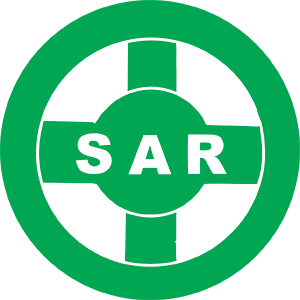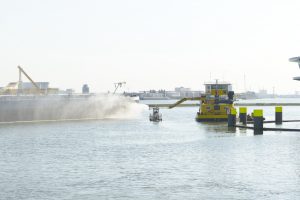Decontamination of Objects


As far as possible contaminated objects should receive a coarse cleaning on the incident site. The main goal is to establish the transportability. Furthermore, decontamination stops further damage of the surface by the contaminant. In case of major events, one has to decide whether or how coarsely cleaned equipment can be used multiple times.
Contaminated equipment has to be packed up in a safe and suitable way (e.g. in plastic bags), marked with information about the incident and the contamination and finally stored in the vicinity of the exit point, as long as the equipment poses no threat.
One has do decide whether a final cleaning / decontamination is cost-effective or the equipment should be disposed without further cleaning / decontamination (costs for thorough cleaning vs. costs for disposal and procuration).

The final cleaning can be done either on site or on special equipped locations, which are more suitable in most cases. In the latter case, one has to follow the specific regulations and precautionary measures for the transport of dangerous goods.
Considering the decontamination of objects respects the following basic principles:
- Decontamination personnel has to wear proper PPE
- Establish a decontamination line for the decontamination personnel
- Avoid further spreading of contamination
- Do not forget to decontaminate the inside and the passengers of vehicles and vessels
- Collect all fluids and wastes
- Determine the suitable decontamination method and the required equipment
- Monitor the effectiveness of the decontamination measures
- Check the economic efficiency of the decontamination measures.
The decontamination process itself depends on the type of object (e.g. rescue equipment, vehicle, vessel) and on the type, quality and quantity of HNS involved. It is recommended to establish a decontamination line similar to the decontamination of rescue personnel:
- Prewashing:
Cleaning of the surfaces from coarse dirt and contaminant. - Main Washing:
Using of high pressure cleaners to clean the surfaces thoroughly and application of decontamination agent. - Residence Time:
Time the decontamination agent needs to react with the contaminants. This time can be used to decontaminate the inside and the passengers of vehicles and vessels. - Rewashing:
Thoroughly washing of the surfaces to remove the decontamination agent and any remaining contaminant. - Recheck:
Randomly check the surface, especially points difficult to access, with sweep tests or monitoring devices to prove the success of the decontamination process. If any remaining contaminant is found, return to station 2 and focus on the still contaminated points.
As the decontamination of objects is not urgent in normal cases, there should be enough time to plan the whole process thoroughly and with the consultation of experts.
